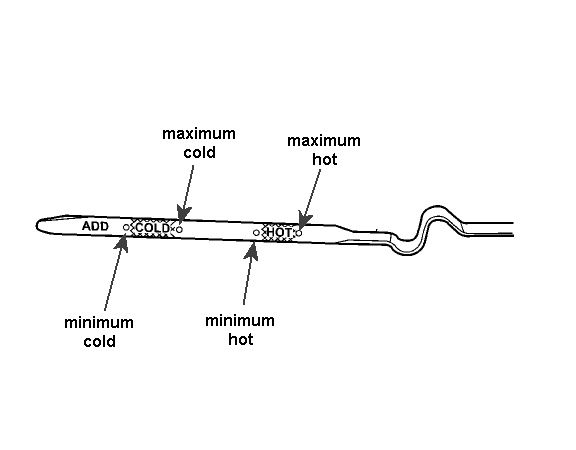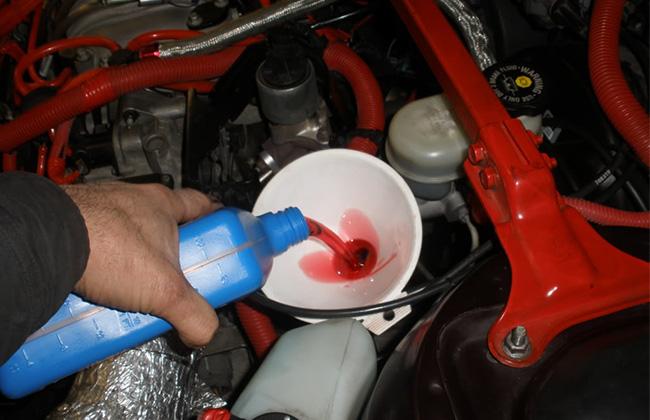
Like with other fluids, make sure the level falls between the minimum and maximum indicators. Most cars have a brake fluid reservoir in the engine bay, and checking it is as simple as taking a look at its level and color.

Leaks can also form, leading to a spongy pedal feel or irregular brake performance. Over time brake fluid can become contaminated by water, which can make brake lines rust. It's supposed to happen instantly – if there's any delay or abnormal feeling to your brake pedal, the fluid is the first thing to check. When you step on the pedal, a plunger pressurizes the brake fluid inside the lines, which causes the brake pads to clamp on the rotors and slow your car. Modern car brakes are hydraulic, meaning that fluid connects the pedal to the brakes themselves. The importance of your car's brakes needs no explanation. If you find that you're frequently adding fluid, it's likely there's a leak, and your car will become increasingly difficult to steer if it isn't addressed. If the fluid is low just top it off, but it's essential to use the type specified for your vehicle to avoid damage. The process is similar in that you'll remove the dipstick or check the markings on the reservoir. Like with other fluids, look for either a dipstick or reservoir in the engine bay.
#Transmission fluid how to#
There's no set timeframe on when power steering fluid needs to be replaced, but you should still know how to check it. Can you imagine trying to parallel park? Modern cars have upgraded to power steering to make maneuvering easy at any speed, and many power steering systems are hydraulic, using pressurized fluid to make turning the wheel effortless (though some newer models now rely on electric streering).

If you've ever driven a classic car, likely the first things you noticed was the super heavy steering. Before you add coolant, make sure it's a type approved for your vehicle and give the radiator a few minutes to "burp" out any trapped air bubbles before you put the cap back on. If it doesn't, open the radiator cap to see if the coolant is filled up to the top. If your car has a coolant expansion tank, look to see if the coolant falls between the minimum and maximum indicators on the tank. The process to check coolant varies from car to car. Always wait for the engine to cool completely before checking the coolant. Pressurized coolant can spray and cause burns. Warning: Never check your coolant while the engine is hot. You only have to check this fluid every 50,000 miles or so, but if there's a leak or other issue it's important to know how to top it off. Maintaining the correct coolant level prevents overheating. Coolant (also known as antifreeze) works to keep everything, well, cool, by absorbing engine heat and dissipating it through the radiator. With all the combustion and friction that happens in an engine, it produces a lot of heat. If it's a darker coffee color or black, it's time for an oil change, and if you see a milky color that means coolant is leaking into the engine. If it's a yellow or amber color, you're good to go. It should feel slick and smooth – if you notice any particles or grittiness, components are likely wearing down, which is a major issue.Īlso look at the color of the oil.

Smear the oil on the dipstick between your fingers. To check it, you're going to have to get your hands dirty. Oil level is one thing, but its condition is equally important. A low reading could indicate your engine is leaking or burning oil, which can cause damage if left untreated. If it's at or below the minimum, add more immediately. The oil on the dipstick should be near maximum. The dipstick is marked with maximum and minimum indicators that show how much oil is in your engine. First, pull the dipstick out and wipe it clean with a towel or rag. It's best to check your oil after your engine has been turned off for at least 10 minutes so the oil can settle at the bottom and cool off.

Most cars have a dipstick in the engine bay which lets you quickly inspect the oil. Engines components spin thousands of times a minute, and it's oil that keeps everything moving smoothly. Engine OilĪfter fuel (unless you have a fancy EV), oil is your car's most important fluid. Here's how to check the six essential fluids in your car. Play icon The triangle icon that indicates to play


 0 kommentar(er)
0 kommentar(er)
